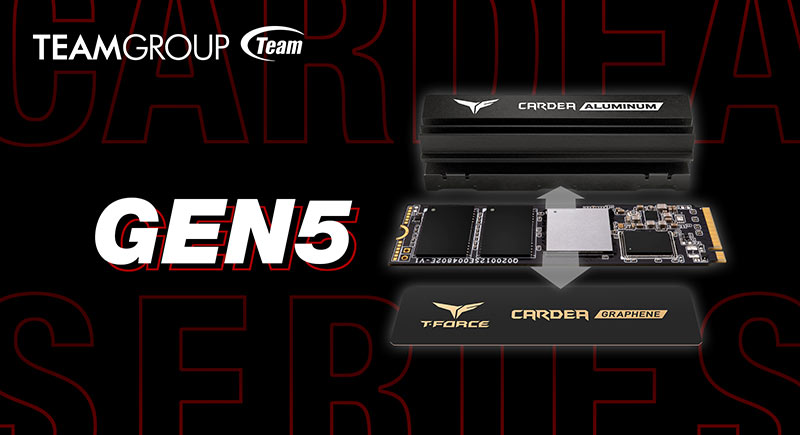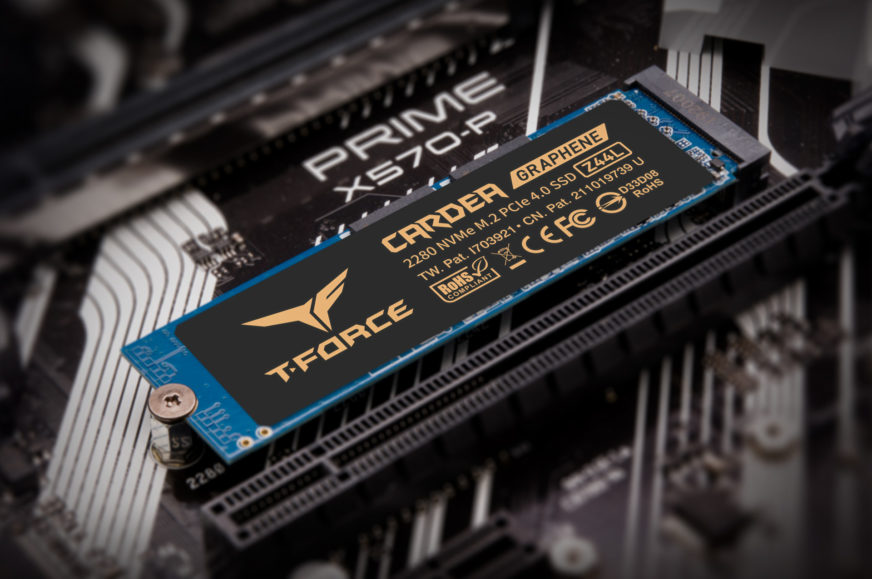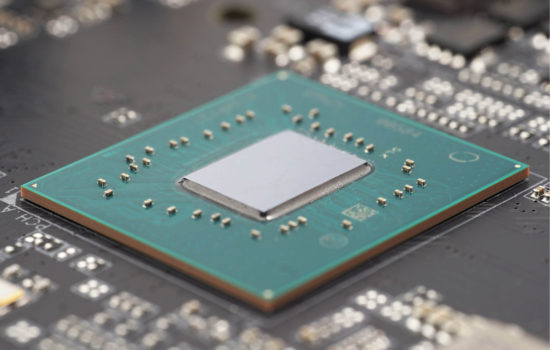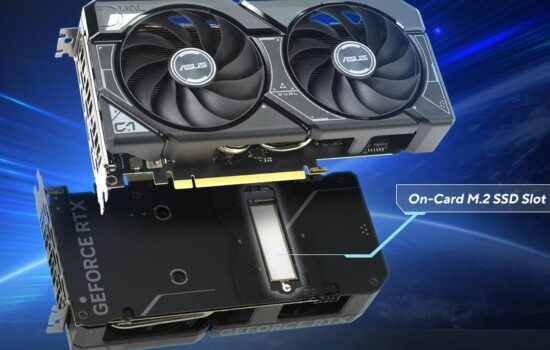Teamgroup/T-Force unveils a PCIe 5.0 SSD in M.2 format
Several SSDs using PCIe Express 5.0 have already been unveiled. So far though, these have been only announcements of products with no store availability information given whatsoever. Teamgroup has also announced their PCIe 5.0 SSDs now, but in this case, the company has shared when are they supposed to come to market. Thanks to this, it’s finally becoming clear when will you have a chance to make Alder Lake’s PCIe 5.0 useful.
Teamgroup unveiled plans for PCIe 5.0 SSDs for gaming PCs last week. They will be released under its T-Force sub-brand. No specific product name has been revealed for them yet, except that they will be part of the Cardea SSD product line. The company will again offer several different versions with different cooling solution, according to the press release. To illustrate that: today, you can choose between an aluminum heatsink, or a version with a thin ceramic or graphene heatspreader. Apparently the PCIe 5.0 SSD from T-Force/Teamgroup will also keep this feature.
The company says it plans to mass produce these SSDs in Q3 2022 – the summer months in other words. Admittedly, they’re talking about “production” instead of real world store availability, so the press release is deliberately keeping some retreat routes open instead of fully committing. But there’s probably a decent chance that these SSDs could be up for grabs in, say, September.
These will apparently be M.2 modules – at least the company’s promotional image shows this design. Although used in the vast majority of SSDs today (provided they are NVMe), using PCI Express 5.0 in M.2 form factor currently comes with the issue that the only platform supporting PCIe 5.0 so far does not have M.2 slots with this connectivity. Boards for Intel Alder Lake processors only provide PCIe 5.0 for the PCIe ×16 slots for graphics cards.
While MSI is planning to offer PCIe 5.0 SSDs in an expansion card form factor due to this complication, Teamgroup/T-Force doesn’t seem to be going in the same direction. This doesn’t mean that these SSDs won’t be usable with Alder Lake, but they will need to be installed in a PCIe 5.0×16 slot adapter (which will however be only using four lanes).

Why are companies planning M.2 PCIe 5.0 modules despite the above is not entirely clear. It could possibly be them considering that there may already be boards on the market that will have native M.2 slots with PCI Express 5.0 mere year or two in the future. Users will then be able to use these first crop of “Gen5” SSDs in such boards normally without them taking up a card slot. It also makes one wonder if the next generation of Z790/B760/H710 boards for Raptor Lake processors are the real target for these SSDs, rather than today’s Z690/B660 (etc) platform. While we haven’t yet heard anything about PCIe 5.0×4 interface for SSDs in the M.2 slot being added to these future platforms, it certainly is something that could happen.
13 GB/s
When released, these PCIe 5.0 SSDs are expected to be the fastest PC storage devices on the market (a leadership that would probably be shared with other similar competitors, as they certainly won’t be alone in the market). The modules will support the NVMe 2.0 protocol and are expected to be available in capacities up to 4TB. Sequential read speeds are expected to reach up to 13,000 MB/s. Writing will be a bit slower as usual, but not by much, it’s still expected to reach 12,000 MB/s.
That shows that the controllers of these first “Gen5” SSDs will utilise the new interface quite well and not leave much bandwidth on the table, unlike how it was with the first generation of SSDs for PCIe Express 4.0. Those reached read speeds of just 5000 MB/s, although the interface allows for up to some 7300 MB/s, as shown by the subsequent second wave of improved controllers and modules. In contrast, the potential of the interface is used quite well here with these PCIe 5.0 SSDs being prepared.
Source: Teamgroup
English translation and edit by Jozef Dudáš, original text by Jan Olšan, editor for Cnews.cz
⠀











